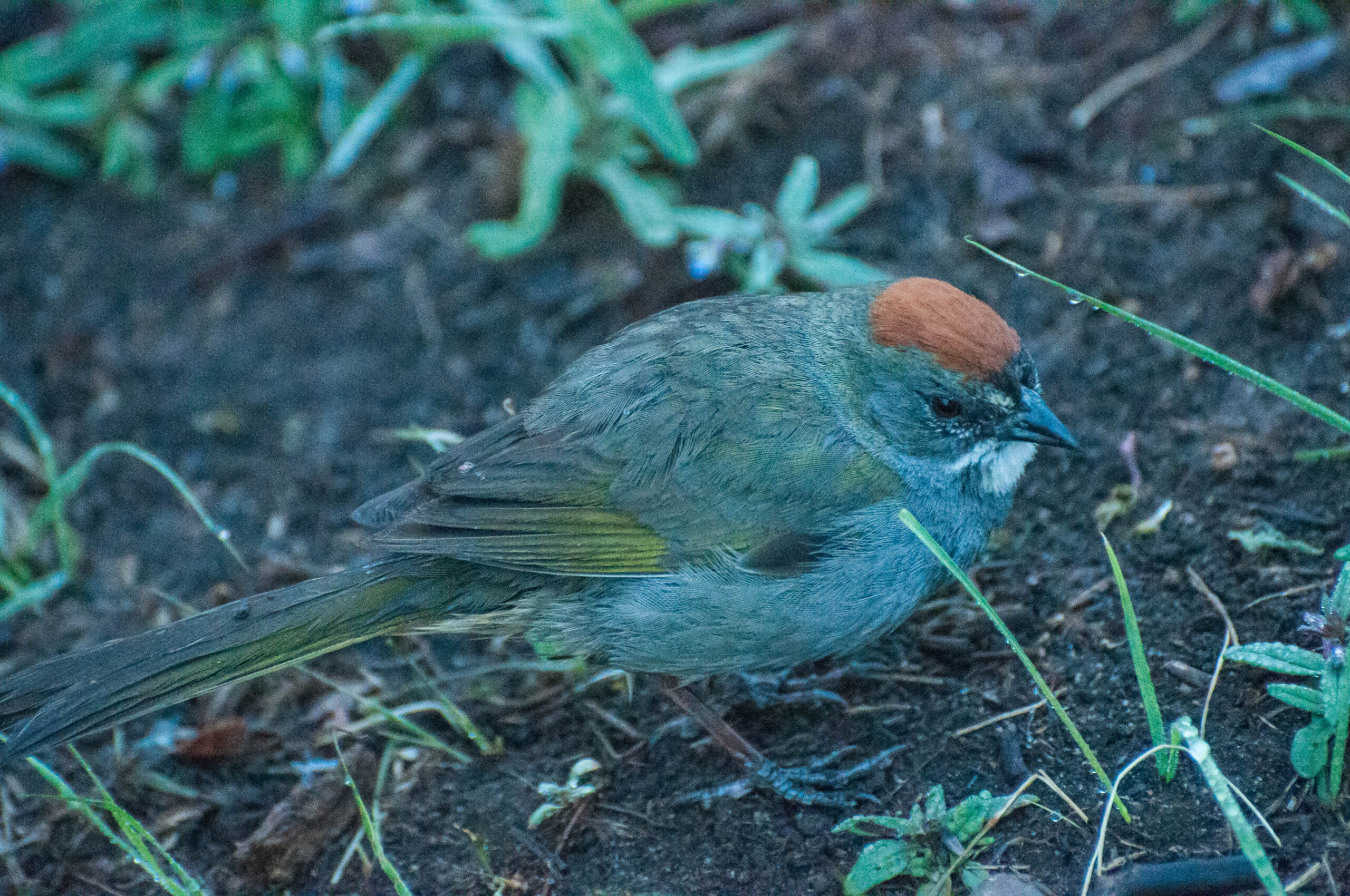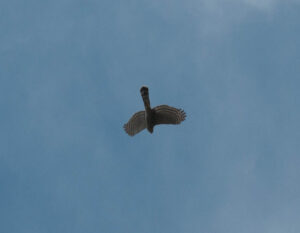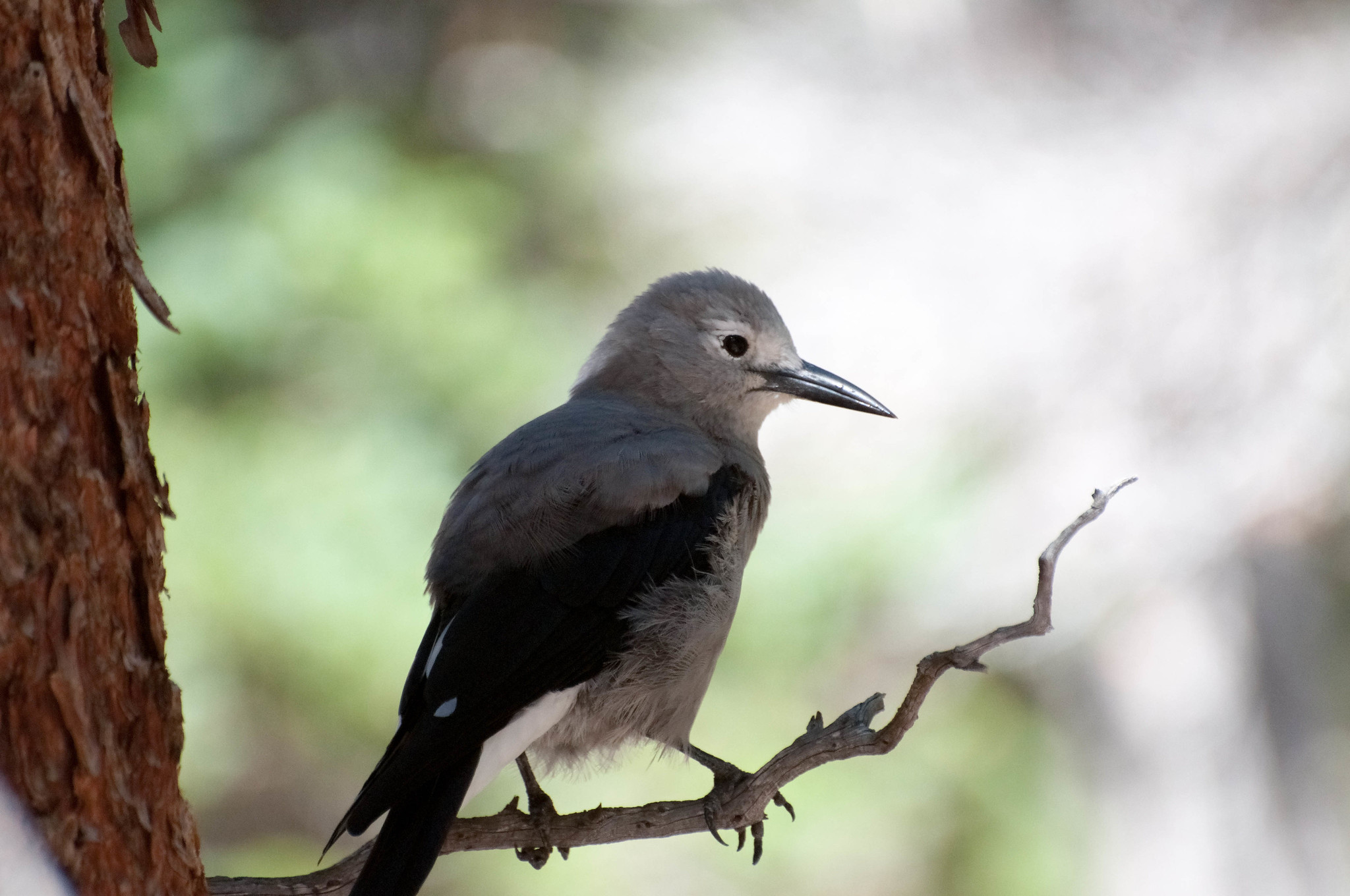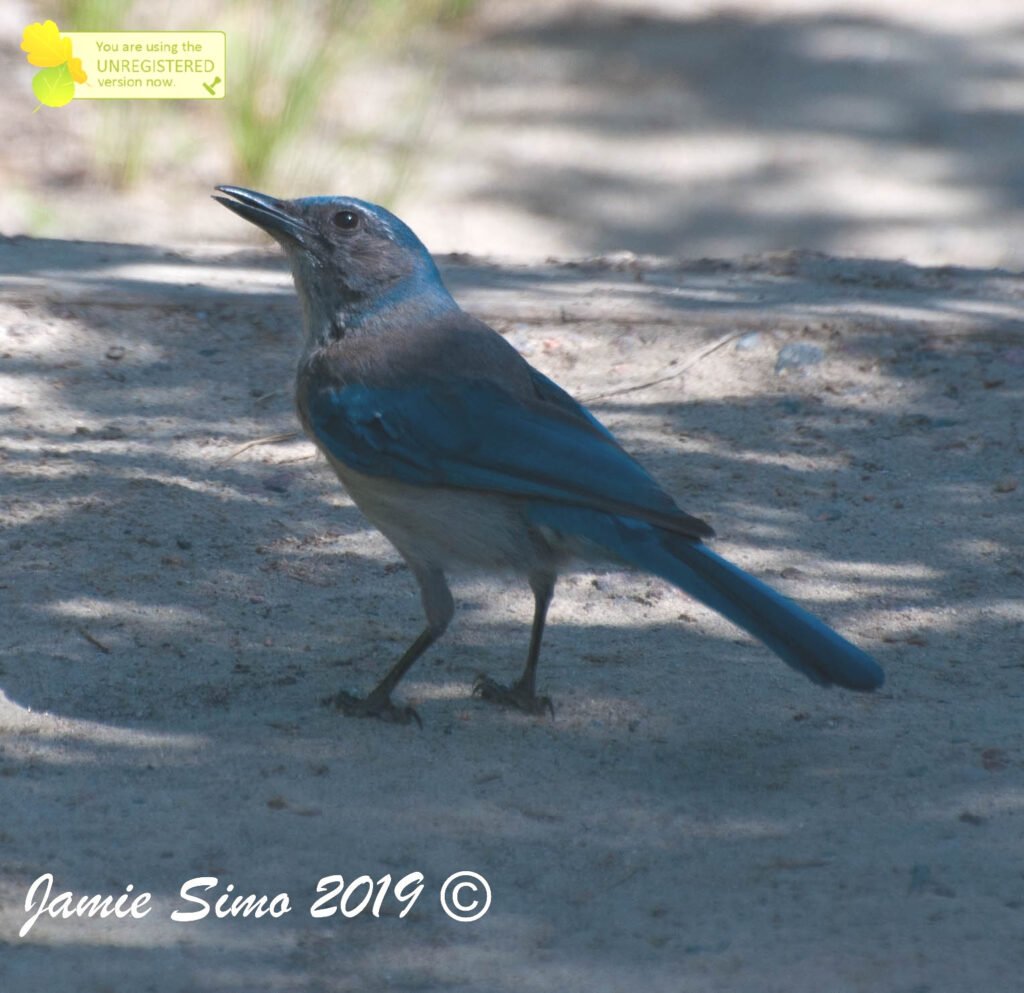
The morning of September 11, 2021 at the Ron Stewart Preserve at Rabbit Mountain began bright and hot for our intrepid group of six birders (myself included) – and got brighter and hotter as it drew on. With each hour of our trip, the sky grew welcomely bluer, as the wildfire smoke that had been hanging around for the last week began to blow out of the area.

Ferruginous Hawk. Photo by Jamie Simo.
The Rabbit Mountain area is the easternmost reach of the Rocky Mountain foothills in Boulder County. As such, it lies in an ecotone where the open shortgrass prairie ecosystem meets and merges with the Ponderosa Pine habitat of the foothills, and interesting species from both habitats can occur here. Golden Eagles nest nearby and are regularly seen soaring over the area year-round. Unfortunately, we did not see any Golden Eagles on this hike – but we did see several other interesting raptors, including a fantastic close-range flyover by a Ferruginous Hawk as we were hiking down the hill that allowed us to study it from below as well as from above, and compare it to nearby soaring Red-tailed Hawks.
With the birds being rather quiet and skulky this time of year in the post-breeding and fall migration season, we practiced a good amount of birding by ear. Finding Blue-gray Gnatcatcher, a tiny bird that spends a lot of time foraging in dense vegetation, becomes much easier when one learns to recognize their wheezy “beee, beee” calls. Even though we only ever had brief views of Spotted Towhee and Green-tailed Towhee, the group learned to know which towhee was skulking in the bushes just out of view by discerning between their common calls: the lower-pitched, raspy mewing call of Spotted Towhee versus the very high-pitched, drawn-out sparrow-like “tseeeet” of Green-tailed Towhee (indeed, towhees are sparrows). At one point, we all heard a Blue Jay out in the open at pretty close range…and yet somehow none of us managed to see it. The call was so definitively Blue Jay, though, that we wouldn’t have needed to see it to confirm the ID – so on the eBird checklist it went!
Speaking of confirming IDs, we had two field lessons on the subject on our Rabbit Mountain bird walk:
- Empidonax flycatchers are hard to ID.
- Accipiters in flight are hard to ID.
The first ID challenge involved a silent, briefly seen flycatcher at the north end of the preserve. A lot of North American flycatcher species look very similar to each other, with sometimes overlapping characteristics that make them very difficult to tell apart visually (even in the hand!). Indeed, the best way to identify most North American flycatchers is by voice. Well, our bird was silent (as a lot of them will be this time of year, on migration), so no help there.* Our flycatcher had a complete white eyering and showed shorter, rounder wings than a pewee when it flew, placing it squarely in genus Empidonax and ruling out Olive-sided Flycatcher and Western Wood-Pewee (genus Contopus). It was grayish overall with a slightly peaked crown, faint dusky vest and slight yellowish wash to the underparts, and had a smaller bill than Willow Flycatcher. This time of year – post-breeding dispersal and fall migration season – the open juniper and cottonwood habitat in which we saw it didn’t provide many helpful clues, as the bird was possibly just passing through and not in its preferred setting. What little we could piece together in the few seconds we observed the bird only narrowed down the probable ID to one of four flycatcher species in genus Empidonax that are likely in this area: Dusky, Least, Hammond’s, and Gray. At the end of the day, if one simply doesn’t have enough information to clinch the species ID, it’s best not to guess. Instead, it’s better to leave the ID at the highest taxonomic level one can be sure of – in this case, genus Empidonax.

Soaring Cooper’s Hawk. Photo by Jamie Simo.
The second ID challenge came as we approached the parking lot near the end of our stay at Rabbit Mountain: a small, long-tailed raptor catching a thermal overhead. The rounded wings eliminated American Kestrel, which has the pointed wings of a falcon. The overall shape of the bird was that of genus Accipiter, the small, powerful “forest hawks,” three species of which occur in North America. This particular Accipiter was clearly a youngster, sporting brown upper parts and heavily streaked with brown below. Definitely too small for Northern Goshawk, the largest North American Accipiter, but was it too large for Sharp-shinned Hawk (the

Sharp-shinned Hawk. Photo by Jamie Simo.
smallest) – and therefore the middle sibling, Cooper’s Hawk? We debated in the field between Sharpie and Coop. I snapped a few quick photos with the bird at a few different angles to study later. I try to do this on tricky IDs in order to prove myself wrong later on my field calls – which happened to be the case with our Accipiter! The photos revealed that in fact, we were looking at a Sharp-shinned Hawk, likely female by its larger size approaching Cooper’s Hawk (and hence the confusion in the field!). Features in favor of Sharp-shinned Hawk (and in contrast to Cooper’s Hawk) include the sharp-cornered tail with not much graduation in length from inner to outer rectrices (tail feathers), a strongly S-curved trailing edge to the wings, more strongly curved leading edge to the wings, a body shape wide at the shoulders and narrow at the hips versus Cooper’s Hawk’s more barrel-chested proportions, smaller head size relative to the rest of the bird, and plumage features including a thin pale terminal edge on the tail and heavy brown streaking on the underparts (this last feature only applicable to our bird because it was an immature individual).
Another highlight of the day was watching a male Lesser Goldfinch attend one of his recently-fledged progeny. The baby Lesser Goldfinch was uniformly green-gray, with a stubby little tail and wings, and wisps of down peeking out on its crown. It begged with fluttering wings, awkwardly following dad around. While breeding season may be over for many birds, goldfinches breeding in our area time their families for the abundant seed crop of late summer. They are the “last call” breeders of the season, a happy reminder of those halcyon summer days filled with adorable baby birds (or tricky juvenile IDs, depending on your opinion) before we remember that cold winter days (and winter birds!) are coming just around the corner!
See you next time – let’s go birding!
eBird checklist: https://ebird.org/checklist/S94535187
26 species (+ 1 other taxon), 85 individuals
11 Rock Pigeon (Feral Pigeon) (Columba livia (Feral Pigeon))
5 Mourning Dove (Zenaida macroura)
1 Northern Harrier (Circus hudsonius)
1 Sharp-shinned Hawk (Accipiter striatus)
2 Red-tailed Hawk (Buteo jamaicensis)
1 Ferruginous Hawk (Buteo regalis)
1 Downy Woodpecker (Dryobates pubescens)
1 Empidonax sp.
1 Blue Jay (Cyanocitta cristata)
4 Black-billed Magpie (Pica hudsonia)
1 Blue-gray Gnatcatcher (Polioptila caerulea)
1 Rock Wren (Salpinctes obsoletus)
3 Sage Thrasher (Oreoscoptes montanus)
17 American Robin (Turdus migratorius)
1 House Finch (Haemorhous mexicanus)
15 Lesser Goldfinch (Spinus psaltria)
1 American Goldfinch (Spinus tristis)
1 Chipping Sparrow (Spizella passerina)
1 Lark Sparrow (Chondestes grammacus)
2 Vesper Sparrow (Pooecetes gramineus)
3 Green-tailed Towhee (Pipilo chlorurus)
4 Spotted Towhee (Pipilo maculatus)
1 Yellow-breasted Chat (Icteria virens)
1 Western Meadowlark (Sturnella neglecta)
2 Yellow-rumped Warbler (Setophaga coronata)
2 Wilson’s Warbler (Cardellina pusilla)
1 Lazuli Bunting (Passerina amoena)
*Side note: at the time we saw the Empidonax flycatcher, one of our walk participants was running the new (as of summer 2021) Sound ID feature of the Cornell Lab of Ornithology’s free Merlin Bird ID app on their phone. The app gave a secondary hit to Dusky Flycatcher, but this was at the same time that two Yellow-rumped Warblers were flying over and giving their chip calls, which are similar to a call made by Dusky Flycatcher. The app had already correctly IDed the warblers. It would be interesting to go back to that recording and its spectrogram and see if our flycatcher did indeed call at that moment.








